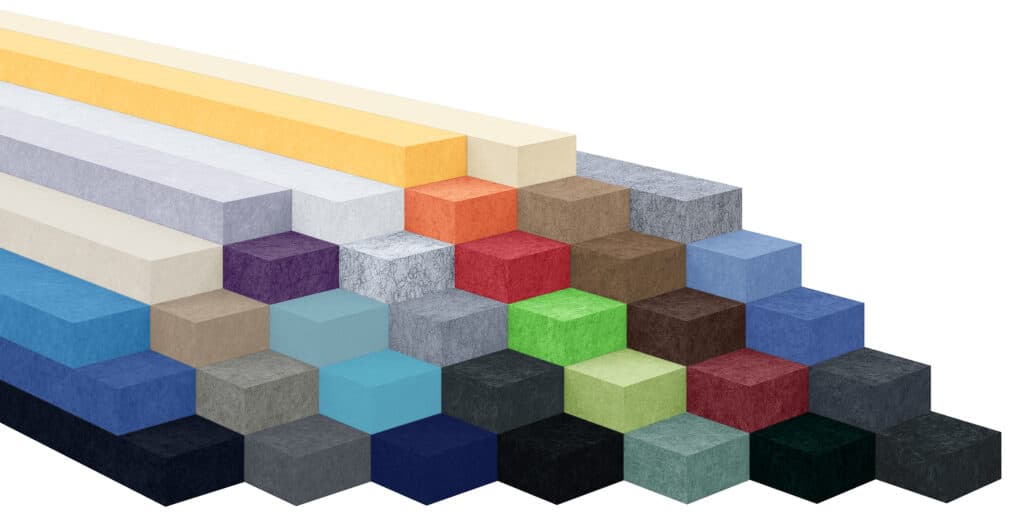When it comes to optimizing the sound quality of a room, selecting the appropriate thickness of acoustic panels is crucial. But with various options available, how do you determine which thickness is best suited for your space? Below are 5 things to consider before choosing your acoustic panel thickness. If optimal sound absorption and acoustic performance are part of your purchase choice, read on.
Acoustic Panel thickness considerations
- Understand Sound Frequencies: Different sound frequencies behave differently in a space. Low frequencies, such as bass tones, require thicker panels to absorb effectively, while high frequencies can be managed with thinner panels. Understanding the frequency range of the sound you’re dealing with is essential in selecting the appropriate thickness.
- Assess Room Size and Purpose: Consider the size and function of the room where the acoustic panels will be installed. Larger rooms with higher ceilings may require thicker panels to adequately control reverberation and sound reflections. Additionally, the intended use of the room – whether it’s a recording studio, home theater, or office space – will influence the thickness needed to achieve optimal acoustics.
- Determine Desired Sound Absorption: The level of sound absorption required in your space will dictate the thickness of the acoustic panels. Thicker panels generally offer higher absorption coefficients across a broader range of frequencies compared to thinner panels. If you need to address significant noise issues or create a highly controlled acoustic environment, thicker panels may be necessary.
- Consider Aesthetic Preferences: While thickness primarily impacts acoustic performance, it’s also important to consider aesthetic preferences and practical constraints. Thicker panels may protrude more from the wall, affecting the overall appearance of the space. In some cases, thinner panels may be preferred for their sleeker profile, especially in areas where visual aesthetics are a priority.
- Consult with Acoustic Experts: When in doubt, seek guidance from acoustic professionals who can assess your specific needs and recommend the most suitable thickness of acoustic panels. They can provide expert advice based on factors such as room dimensions, construction materials, and desired sound quality.
Choosing for Sound control
Choosing the right thickness of acoustic panels is essential for achieving optimal sound control and creating a comfortable acoustic environment. It is important to consider all of the above before making any purchasing decision. If you’re unsure about the best thickness for your project, don’t hesitate to consult with one of our acoustic experts who can provide personalized recommendations tailored to your needs and budget. Mumble® provides a wide variety of Acoustic Panel thicknesses including 9mm, 12mm, 18mm and 24mm panels.


